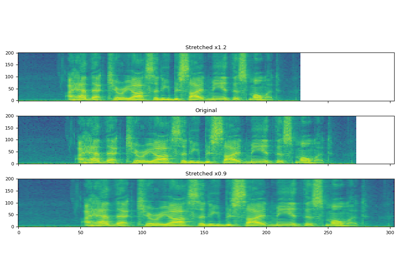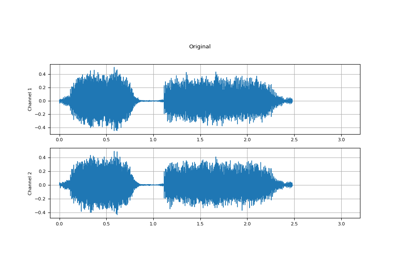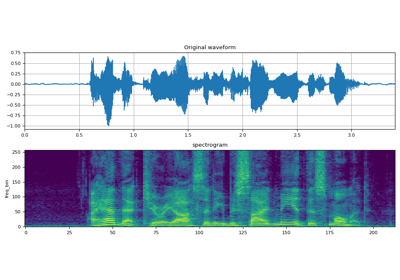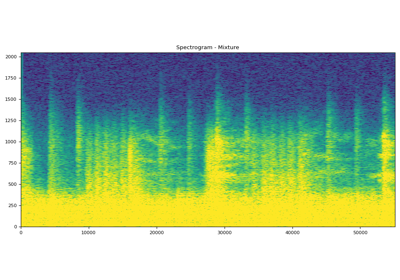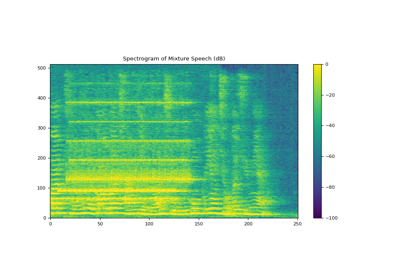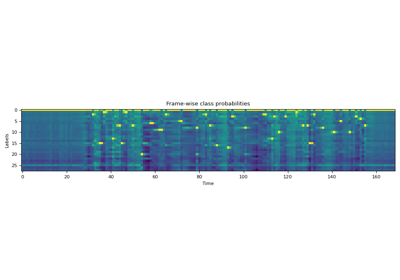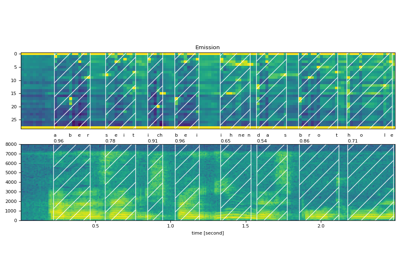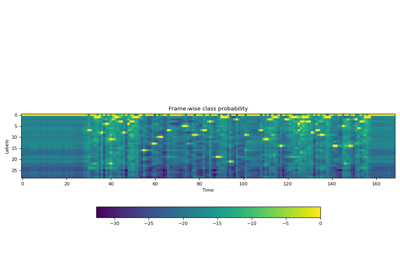torchaudio.load¶
- torchaudio.load(uri: Union[BinaryIO, str, PathLike], frame_offset: int = 0, num_frames: int = -1, normalize: bool = True, channels_first: bool = True, format: Optional[str] = None, buffer_size: int = 4096, backend: Optional[str] = None) Tuple[Tensor, int][source]¶
Load audio data from source using TorchCodec’s AudioDecoder.
Note
As of TorchAudio 2.9, this function relies on TorchCodec’s decoding capabilities under the hood. It is provided for convenience, but we do recommend that you port your code to natively use
torchcodec’sAudioDecoderclass for better performance: https://docs.pytorch.org/torchcodec/stable/generated/torchcodec.decoders.AudioDecoder. Because of the reliance on Torchcodec, the parametersnormalize,buffer_size, andbackendare ignored and accepted only for backwards compatibility. To install torchcodec, follow the instructions at https://github.com/pytorch/torchcodec#installing-torchcodec.- Parameters
uri (path-like object or file-like object) –
Source of audio data. The following types are accepted:
path-like: File path or URL.file-like: Object withread(size: int) -> bytesmethod.
frame_offset (int, optional) – Number of samples to skip before start reading data.
num_frames (int, optional) – Maximum number of samples to read.
-1reads all the remaining samples, starting fromframe_offset.normalize (bool, optional) – TorchCodec always returns normalized float32 samples. This parameter is ignored and a warning is issued if set to False. Default:
True.channels_first (bool, optional) – When True, the returned Tensor has dimension [channel, time]. Otherwise, the returned Tensor’s dimension is [time, channel].
format (str or None, optional) – Format hint for the decoder. May not be supported by all TorchCodec decoders. (Default:
None)buffer_size (int, optional) – Not used by TorchCodec AudioDecoder. Provided for API compatibility.
backend (str or None, optional) – Not used by TorchCodec AudioDecoder. Provided for API compatibility.
- Returns
Resulting Tensor and sample rate. Always returns float32 tensors. If
channels_first=True, shape is [channel, time], otherwise [time, channel].- Return type
(torch.Tensor, int)
- Raises
ImportError – If torchcodec is not available.
ValueError – If unsupported parameters are used.
RuntimeError – If TorchCodec fails to decode the audio.
Note
TorchCodec always returns normalized float32 samples, so the
normalize
parameter has no effect. - The
buffer_sizeandbackendparameters are ignored. - Not all audio formats supported by torchaudio backends may be supported by TorchCodec.- Tutorials using
load: 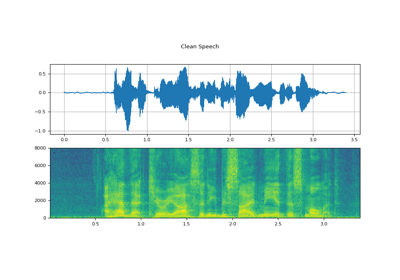
Torchaudio-Squim: Non-intrusive Speech Assessment in TorchAudio
Torchaudio-Squim: Non-intrusive Speech Assessment in TorchAudio

